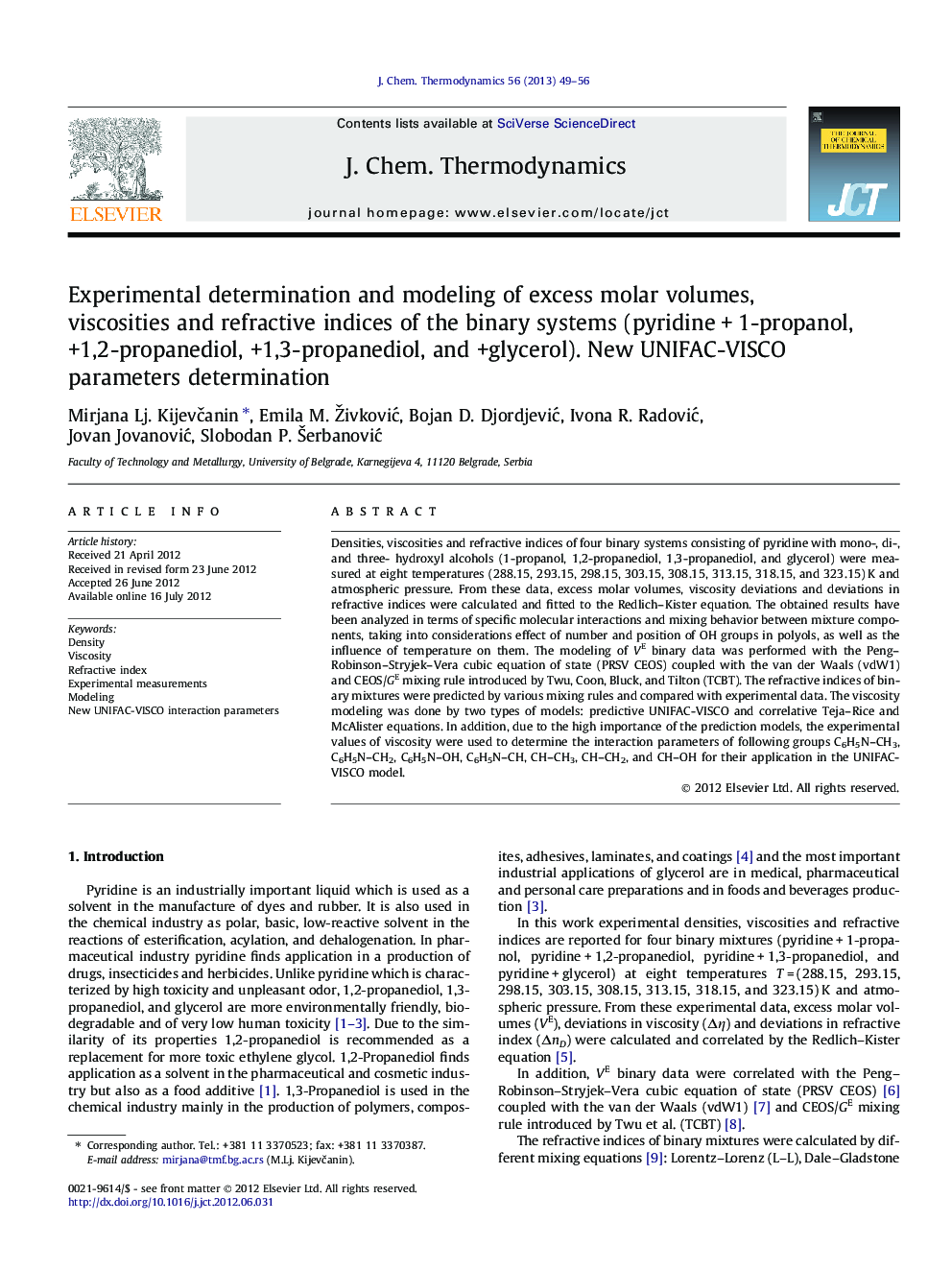| Article ID | Journal | Published Year | Pages | File Type |
|---|---|---|---|---|
| 215920 | The Journal of Chemical Thermodynamics | 2013 | 8 Pages |
Densities, viscosities and refractive indices of four binary systems consisting of pyridine with mono-, di-, and three- hydroxyl alcohols (1-propanol, 1,2-propanediol, 1,3-propanediol, and glycerol) were measured at eight temperatures (288.15, 293.15, 298.15, 303.15, 308.15, 313.15, 318.15, and 323.15) K and atmospheric pressure. From these data, excess molar volumes, viscosity deviations and deviations in refractive indices were calculated and fitted to the Redlich–Kister equation. The obtained results have been analyzed in terms of specific molecular interactions and mixing behavior between mixture components, taking into considerations effect of number and position of OH groups in polyols, as well as the influence of temperature on them. The modeling of VE binary data was performed with the Peng–Robinson–Stryjek–Vera cubic equation of state (PRSV CEOS) coupled with the van der Waals (vdW1) and CEOS/GE mixing rule introduced by Twu, Coon, Bluck, and Tilton (TCBT). The refractive indices of binary mixtures were predicted by various mixing rules and compared with experimental data. The viscosity modeling was done by two types of models: predictive UNIFAC-VISCO and correlative Teja–Rice and McAlister equations. In addition, due to the high importance of the prediction models, the experimental values of viscosity were used to determine the interaction parameters of following groups C6H5N–CH3, C6H5N–CH2, C6H5N–OH, C6H5N–CH, CH–CH3, CH–CH2, and CH–OH for their application in the UNIFAC-VISCO model.
► nD and η of pyridine+ mono, or –di, or three hydroxyl alcohols. ► Strong hydrogen bonding interaction between pyridine and alcohols. ► For the correlation of VmE three parameters models (vdW1-3 and TCBT) are recommended. ► New UNIFAC-VISCO parameters determinations.
